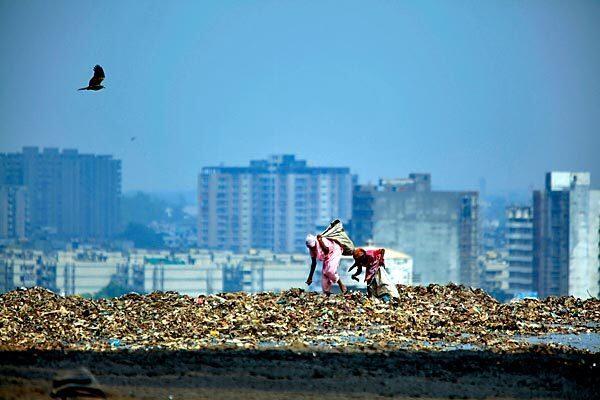At the Ghazipur landfill in New Delhi, some of the poorest reside and eke out a living by picking through garbage in search of bottles, metal and human hair. They dream of joining the middle class. See full story
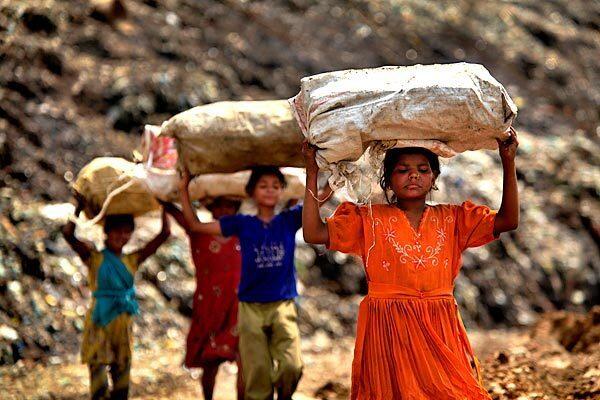
At New Delhi’s “trash mountain,” families earn $1 to $2 a day slogging through waist-deep muck. (Rick Loomis / Los Angeles Times)
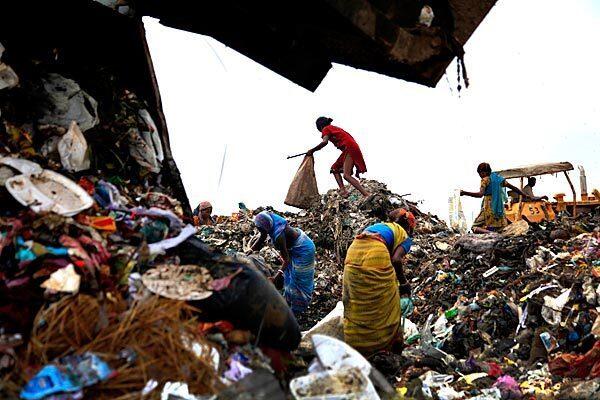
Rag pickers hunt through the 100-foot-high “trash mountain” at New Delhi’s Ghazipur landfill. (Rick Loomis / Los Angeles Times)
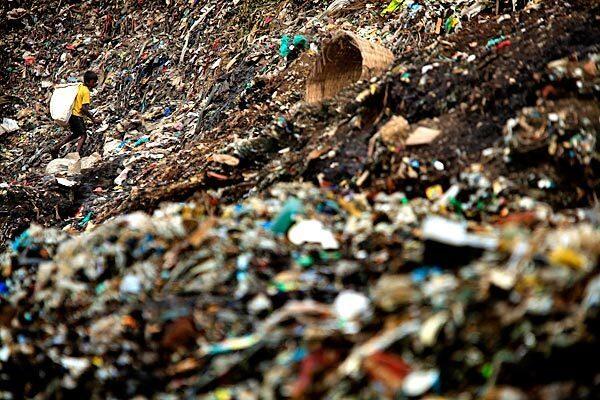
An outgrowth of India’s rapidly expanding middle class with its embrace of Western-style consumerism is ever more waste. (Rick Loomis / Los Angeles Times)
Advertisement
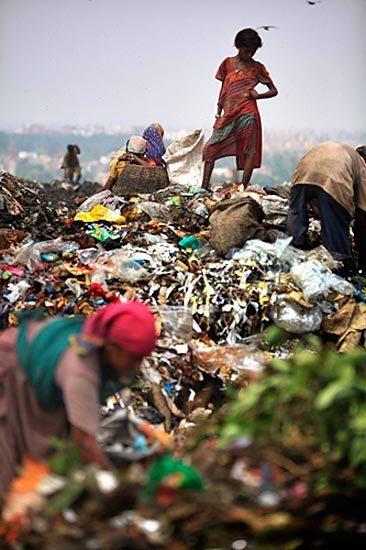
Rising expectations and a hunger for a better life are seen in small ways at the Ghazipur landfill, charity workers say. Children balk at donations of unfashionable clothing. Twentysomethings sport stylish haircuts. Many listen to the latest pop tunes on cheap cellphones. (Rick Loomis / Los Angeles Times)
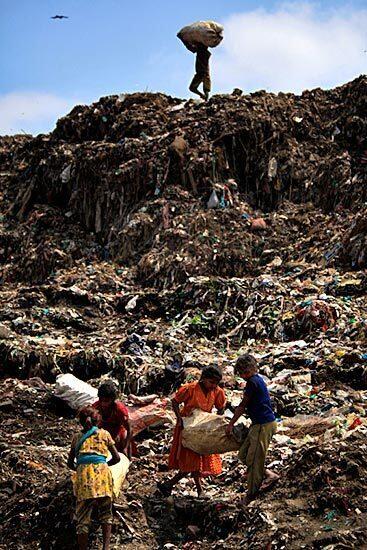
Because New Delhi has no real door-to-door waste-collection system, the most “desirable” refuse is snapped up by domestic workers or neighborhood pickers, who then take the leftovers to select waste sites around the city. From there, trash trucks dump the rest at Ghazipur landfill, where residents pick over the leavings. (Rick Loomis / Los Angeles Times)
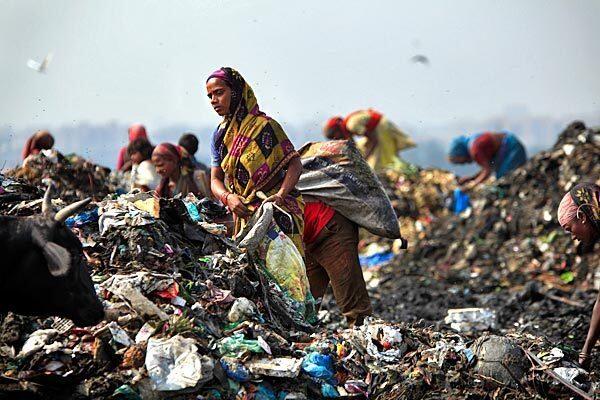
Most of those living at the garbage dump are Muslims from impoverished central Bihar state or illegal immigrants from Bangladesh. (Rick Loomis / Los Angeles Times)
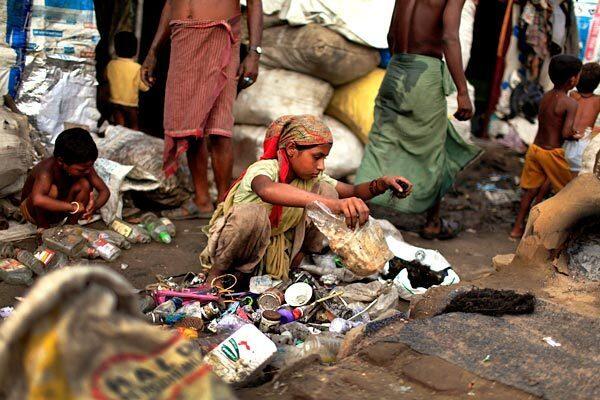
Once collected, trash is sorted, often by children, into piles up to 12 feet high: plastic bottles, cups, bottle caps, bent cutlery. Buyers pay 5 cents a pound for plastic bags and $18 per pound for human hair, used in wigs. (Rick Loomis / Los Angeles Times)
